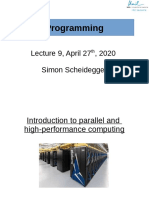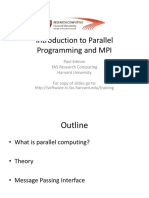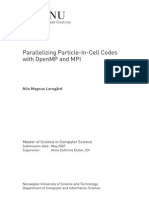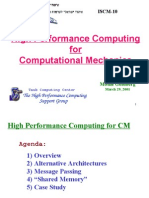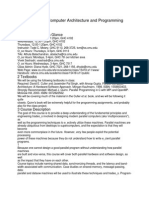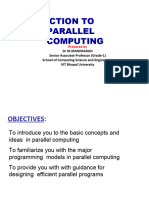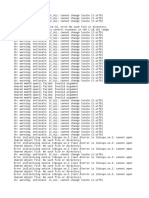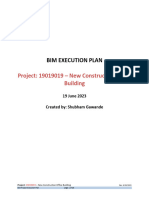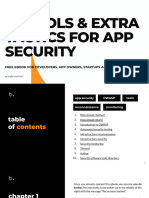0% found this document useful (0 votes)
69 views19 pages01 ParProg20
This document provides an overview of a course on parallel programming with OpenMP and MPI. The course will be taught online with weekly lectures and exercise sessions. The lectures will cover parallel computer architecture, shared-memory and message passing parallel programming, and performance optimization. Students are expected to have some programming experience in C, C++, or Fortran and familiarity with Linux. The course aims to teach how to effectively map numerical algorithms to modern parallel computer hardware.
Uploaded by
ogyxxx76Copyright
© © All Rights Reserved
We take content rights seriously. If you suspect this is your content, claim it here.
Available Formats
Download as PDF, TXT or read online on Scribd
0% found this document useful (0 votes)
69 views19 pages01 ParProg20
This document provides an overview of a course on parallel programming with OpenMP and MPI. The course will be taught online with weekly lectures and exercise sessions. The lectures will cover parallel computer architecture, shared-memory and message passing parallel programming, and performance optimization. Students are expected to have some programming experience in C, C++, or Fortran and familiarity with Linux. The course aims to teach how to effectively map numerical algorithms to modern parallel computer hardware.
Uploaded by
ogyxxx76Copyright
© © All Rights Reserved
We take content rights seriously. If you suspect this is your content, claim it here.
Available Formats
Download as PDF, TXT or read online on Scribd
/ 19


























